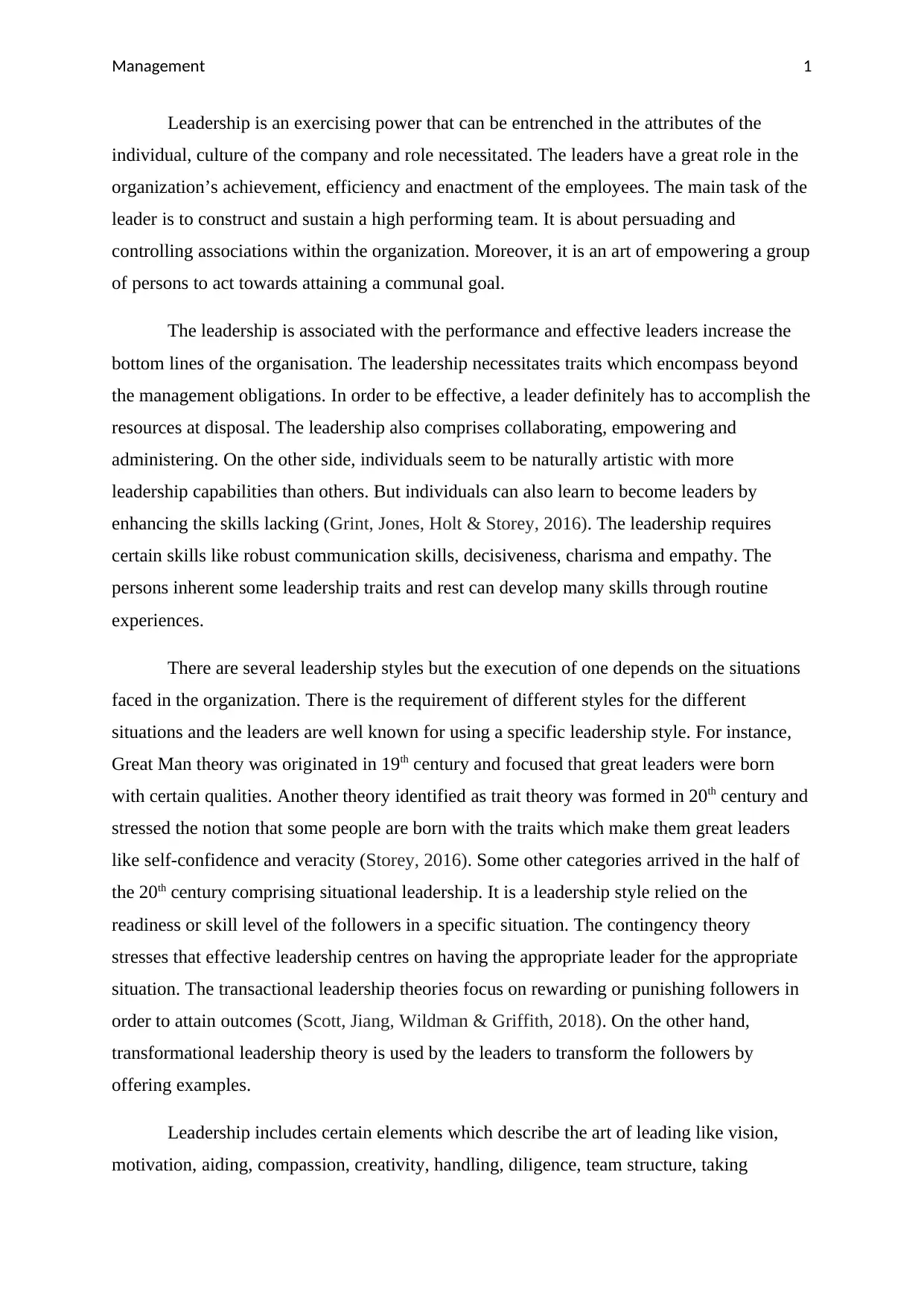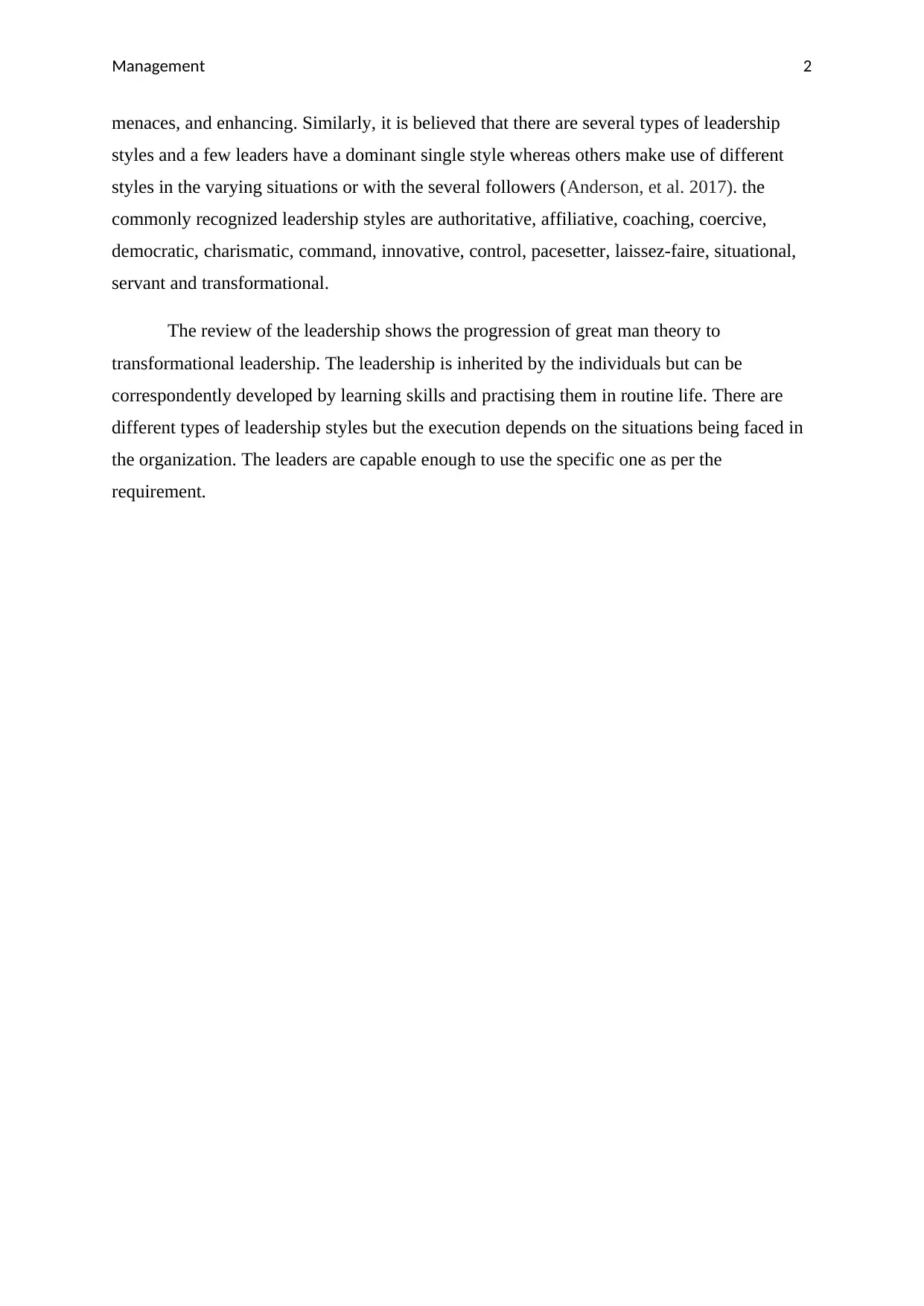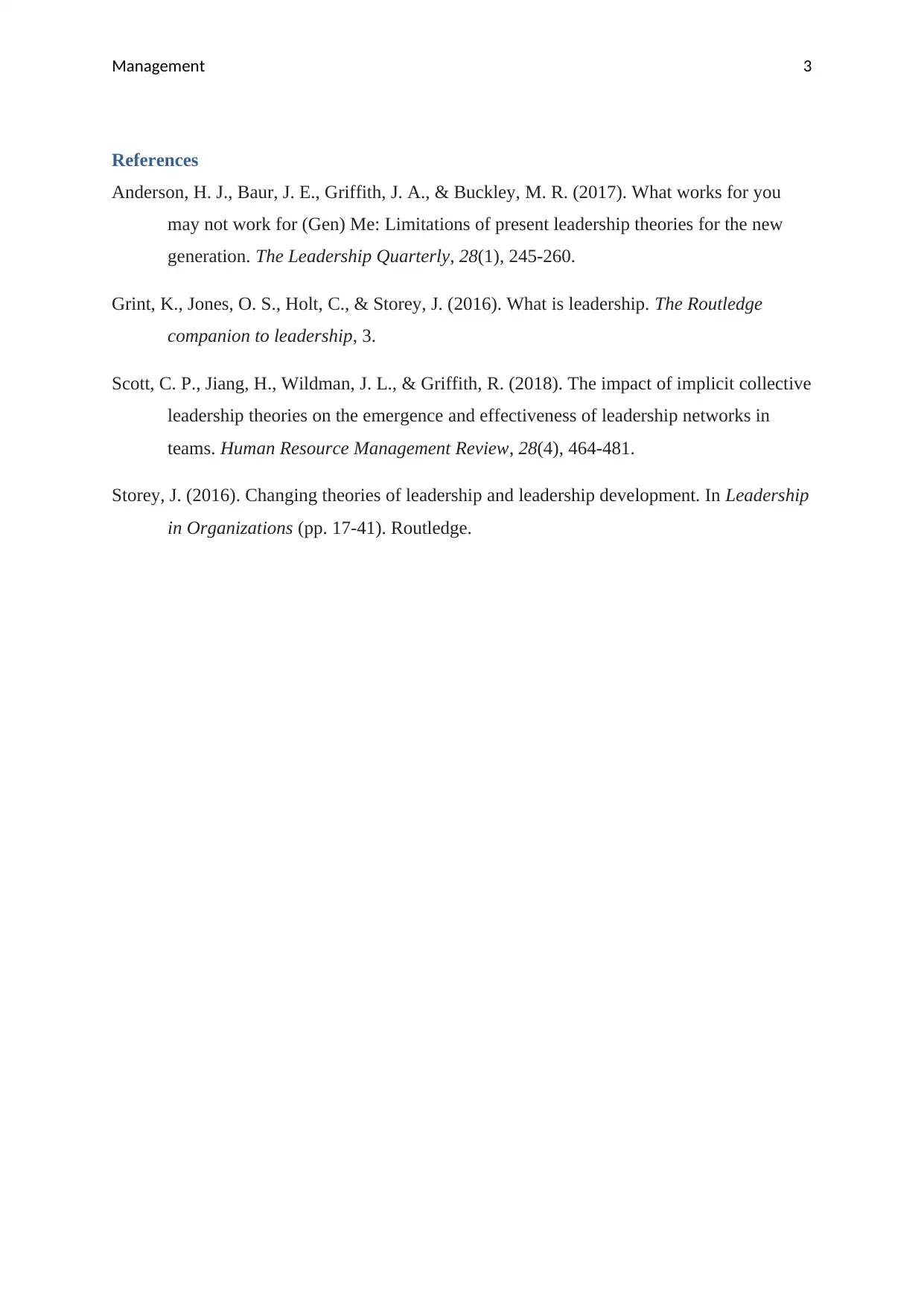An Analysis of Leadership Theories and Management Styles
VerifiedAdded on 2022/11/13
|4
|792
|433
Essay
AI Summary
This essay provides a comprehensive overview of leadership, exploring its multifaceted nature and significance in organizational success. It defines leadership as the art of influencing and guiding individuals toward a common goal, emphasizing the leader's role in building high-performing teams. The essay delves into the traits and skills essential for effective leadership, highlighting the importance of communication, decisiveness, charisma, and empathy. It then examines various leadership styles, including the Great Man theory, trait theory, situational leadership, and transformational leadership, illustrating how the choice of style depends on organizational contexts. The discussion further encompasses the key elements of leadership such as vision, motivation, and team structure. Ultimately, the essay underscores the evolution of leadership theories, from the Great Man theory to transformational leadership, and asserts that while certain leadership qualities may be inherent, leadership skills can be developed through experience and practice. The essay also provides a list of different leadership styles, including authoritative, affiliative, coaching, coercive, democratic, charismatic, command, innovative, control, pacesetter, laissez-faire, situational, servant, and transformational.
1 out of 4









![[object Object]](/_next/static/media/star-bottom.7253800d.svg)